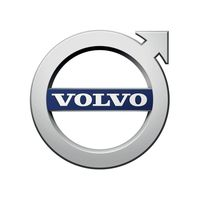The Electric Frontier: Navigating the Dual Paths of Desay SV and Polestar
August 29, 2024, 4:42 pm
In the rapidly evolving landscape of mobility technology, two companies stand at opposite ends of the spectrum: Desay SV and Polestar. One is surging forward, fueled by innovation and strategic foresight. The other grapples with setbacks, struggling to find its footing in a competitive market.
Desay SV, a titan in the mobility technology sector, recently showcased its prowess at the 4th Technology Festival in Huizhou, China. The event, themed "Unlimited Intelligence," was a testament to the company's commitment to innovation. With over 30 cutting-edge products on display, Desay SV is not just keeping pace; it’s setting the pace. From intelligent driving sensors to integrated cabin systems, the company is weaving a tapestry of advanced technology that promises to redefine mobility.
In stark contrast, Polestar finds itself in turbulent waters. The Swedish electric vehicle (EV) maker reported a significant operating loss in the second quarter of 2024. This follows a series of challenges, including delayed car launches and a slowdown in demand. The company recently replaced its CEO, a move that underscores the urgency of its situation. Polestar's journey is a cautionary tale of ambition colliding with reality.
Desay SV's success is rooted in its philosophy of long-termism. The company reported a staggering revenue increase of 34.02% year-on-year, reaching RMB 11.69 billion. This growth is not a mere fluke; it’s the result of strategic investments in research and development. Desay SV aims to be the preferred partner in mobility transformation, a vision that is reflected in its robust product lineup and commitment to customer satisfaction.
Meanwhile, Polestar's narrative is marred by financial woes. The company’s operating loss narrowed slightly to $242.3 million, but the underlying issues remain. With a gross margin slipping into negative territory, Polestar faces a daunting challenge. The EV market is a battlefield, and the price war ignited by Tesla has left many startups, including Polestar, scrambling for survival.
The contrast between these two companies is stark. Desay SV thrives on innovation and a clear strategic vision. Its Technology Festival not only showcased products but also offered hands-on experiences with vehicles equipped with Desay SV technology. This approach fosters a deeper connection with consumers and positions the company as a leader in intelligent mobility solutions.
Polestar, on the other hand, is struggling to maintain its footing. The company’s revenue fell to $574.9 million, down from $693.3 million a year earlier. The challenges are compounded by punitive import tariffs on China-made EVs, which have further strained its operations. Although Polestar has begun production of its Polestar 3 SUV in the United States, the road ahead remains fraught with obstacles.
Desay SV’s global reach is another pillar of its success. With R&D and service branches in key markets like Germany, Japan, and the USA, the company is well-positioned to adapt to diverse market demands. Its partnerships with major automotive players, including Toyota and Volkswagen, enhance its credibility and market presence. This network is a safety net, providing stability in an unpredictable industry.
Polestar, despite its strong backing from Volvo and Geely, faces a critical juncture. The decision by Volvo to halt further funding was a significant blow. While Geely remains committed, the pressure is mounting. The company’s reliance on external funding highlights the precarious nature of its business model. In a market where agility is key, Polestar must pivot quickly to regain momentum.
The dichotomy between Desay SV and Polestar illustrates the broader trends in the mobility sector. Innovation is the lifeblood of success. Companies that embrace change and invest in R&D are more likely to thrive. Desay SV exemplifies this ethos, continuously pushing the boundaries of technology. Its focus on intelligent mobility solutions is not just a strategy; it’s a vision for the future.
Conversely, Polestar’s struggles serve as a reminder of the challenges inherent in the EV market. The landscape is littered with ambitious startups that have faltered. The competition is fierce, and consumer expectations are high. In this environment, complacency is a luxury that few can afford.
As the electric vehicle revolution unfolds, the paths of Desay SV and Polestar will continue to diverge. Desay SV is poised for growth, riding the wave of innovation and strategic foresight. Polestar, however, must navigate a storm of challenges, seeking a way to stabilize its operations and regain consumer trust.
In conclusion, the electric frontier is a dynamic and unpredictable landscape. Companies like Desay SV are leading the charge, while others like Polestar are learning hard lessons. The future of mobility will be shaped by those who dare to innovate and adapt. As the industry evolves, the stories of these two companies will serve as both inspiration and cautionary tales for the next generation of mobility pioneers.
Desay SV, a titan in the mobility technology sector, recently showcased its prowess at the 4th Technology Festival in Huizhou, China. The event, themed "Unlimited Intelligence," was a testament to the company's commitment to innovation. With over 30 cutting-edge products on display, Desay SV is not just keeping pace; it’s setting the pace. From intelligent driving sensors to integrated cabin systems, the company is weaving a tapestry of advanced technology that promises to redefine mobility.
In stark contrast, Polestar finds itself in turbulent waters. The Swedish electric vehicle (EV) maker reported a significant operating loss in the second quarter of 2024. This follows a series of challenges, including delayed car launches and a slowdown in demand. The company recently replaced its CEO, a move that underscores the urgency of its situation. Polestar's journey is a cautionary tale of ambition colliding with reality.
Desay SV's success is rooted in its philosophy of long-termism. The company reported a staggering revenue increase of 34.02% year-on-year, reaching RMB 11.69 billion. This growth is not a mere fluke; it’s the result of strategic investments in research and development. Desay SV aims to be the preferred partner in mobility transformation, a vision that is reflected in its robust product lineup and commitment to customer satisfaction.
Meanwhile, Polestar's narrative is marred by financial woes. The company’s operating loss narrowed slightly to $242.3 million, but the underlying issues remain. With a gross margin slipping into negative territory, Polestar faces a daunting challenge. The EV market is a battlefield, and the price war ignited by Tesla has left many startups, including Polestar, scrambling for survival.
The contrast between these two companies is stark. Desay SV thrives on innovation and a clear strategic vision. Its Technology Festival not only showcased products but also offered hands-on experiences with vehicles equipped with Desay SV technology. This approach fosters a deeper connection with consumers and positions the company as a leader in intelligent mobility solutions.
Polestar, on the other hand, is struggling to maintain its footing. The company’s revenue fell to $574.9 million, down from $693.3 million a year earlier. The challenges are compounded by punitive import tariffs on China-made EVs, which have further strained its operations. Although Polestar has begun production of its Polestar 3 SUV in the United States, the road ahead remains fraught with obstacles.
Desay SV’s global reach is another pillar of its success. With R&D and service branches in key markets like Germany, Japan, and the USA, the company is well-positioned to adapt to diverse market demands. Its partnerships with major automotive players, including Toyota and Volkswagen, enhance its credibility and market presence. This network is a safety net, providing stability in an unpredictable industry.
Polestar, despite its strong backing from Volvo and Geely, faces a critical juncture. The decision by Volvo to halt further funding was a significant blow. While Geely remains committed, the pressure is mounting. The company’s reliance on external funding highlights the precarious nature of its business model. In a market where agility is key, Polestar must pivot quickly to regain momentum.
The dichotomy between Desay SV and Polestar illustrates the broader trends in the mobility sector. Innovation is the lifeblood of success. Companies that embrace change and invest in R&D are more likely to thrive. Desay SV exemplifies this ethos, continuously pushing the boundaries of technology. Its focus on intelligent mobility solutions is not just a strategy; it’s a vision for the future.
Conversely, Polestar’s struggles serve as a reminder of the challenges inherent in the EV market. The landscape is littered with ambitious startups that have faltered. The competition is fierce, and consumer expectations are high. In this environment, complacency is a luxury that few can afford.
As the electric vehicle revolution unfolds, the paths of Desay SV and Polestar will continue to diverge. Desay SV is poised for growth, riding the wave of innovation and strategic foresight. Polestar, however, must navigate a storm of challenges, seeking a way to stabilize its operations and regain consumer trust.
In conclusion, the electric frontier is a dynamic and unpredictable landscape. Companies like Desay SV are leading the charge, while others like Polestar are learning hard lessons. The future of mobility will be shaped by those who dare to innovate and adapt. As the industry evolves, the stories of these two companies will serve as both inspiration and cautionary tales for the next generation of mobility pioneers.

